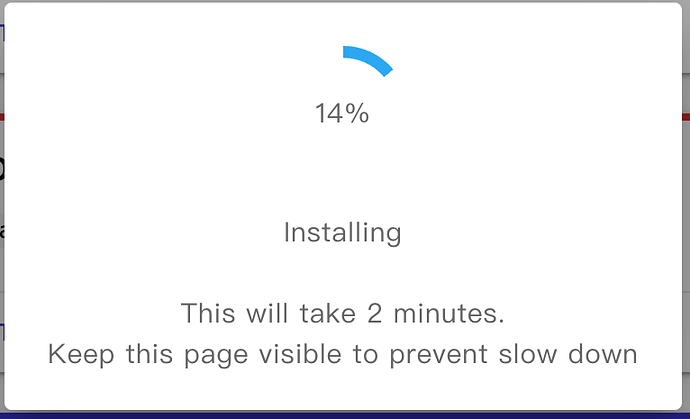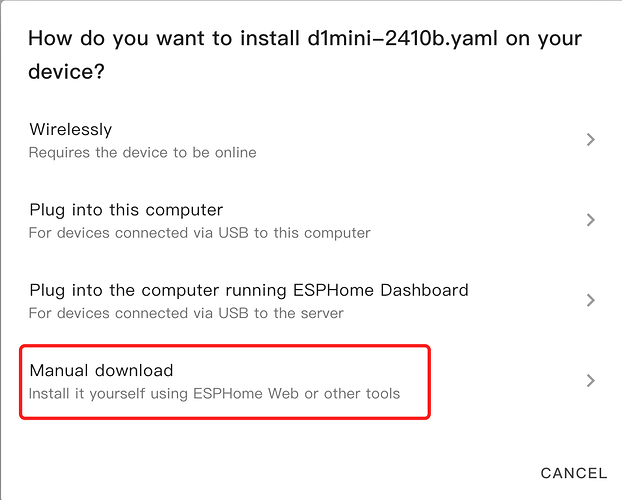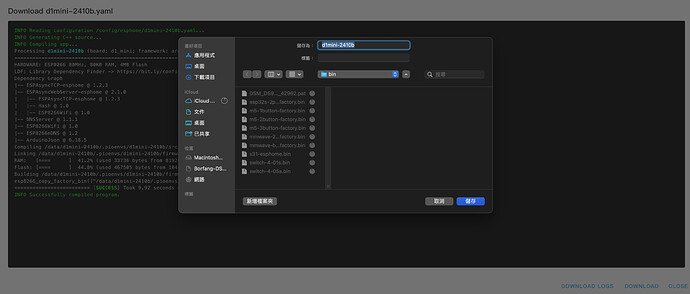HA EspHome安裝 (已經安裝的可以跳過此步驟)
安裝請到
照官網步驟就可以完成
安裝完成後先到 secrets 設定一下wifi的帳號密碼等等會用到
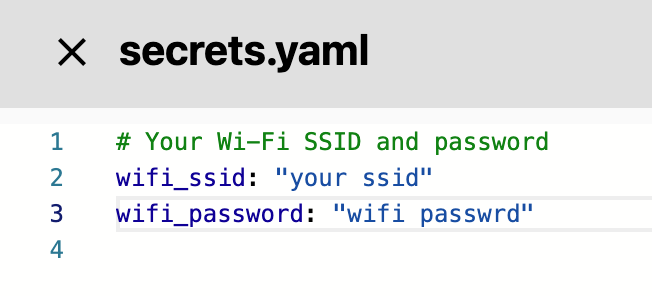
先拿出你的type c線連接你的電腦跟d1 mini
新增一個device
此時會跳出連接port選項 請選擇你的usb選好後點擊連線
如果出現這個表示選錯請重新選一個
等待第一次燒入完成
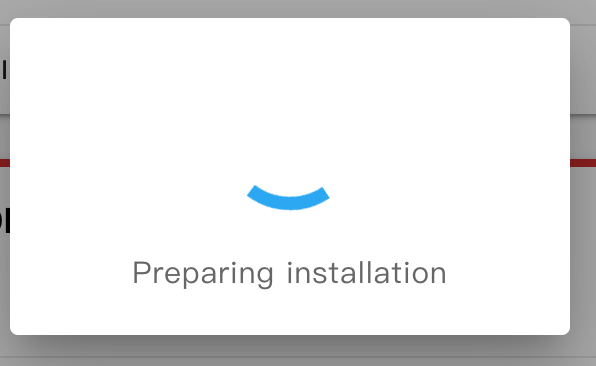
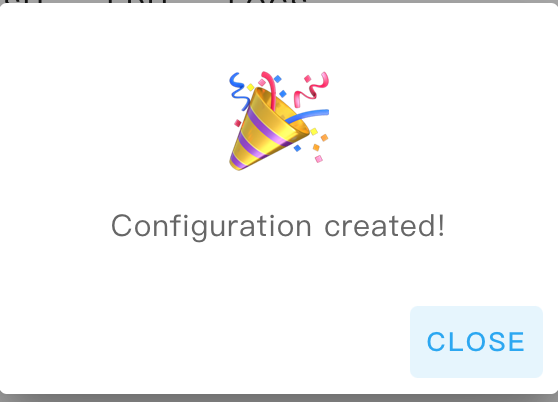
新增完以後直接選剛剛生成的device 點edit進去將yaml整個複製貼上
D1 Mini + 2410B yaml
external_components:
- source: github://oxan/esphome-stream-server
substitutions:
name: "d1mini-2410b"
tcp_port: "8888"
#tcp_port 定義遠端控制vcom連線時用的port
esphome:
name: ${name}
name_add_mac_suffix: true
#name_add_mac_suffix 添加mac位址在name後面
#不需要再name後面增加mac位址需把此行註解掉
#缺點 ota時需產出bin並登入web頁面更新
#優點 每個設備加入時都會是不同的id方便辨識
esp8266:
board: d1_mini
# Enable logging
logger:
baud_rate: 0
# Enable Home Assistant API
api:
web_server:
port: 80
include_internal: true
version: 2
ota:
wifi:
ssid: !secret wifi_ssid
password: !secret wifi_password
# Enable fallback hotspot (captive portal) in case wifi connection fails
ap:
# ssid: ${name}
password: "87654321"
# ssid前面加上註解可為ap的ssid後面加上mac位址
# ap ssid加上mac在連esp時可以方便辨識是連哪顆裝置
# 如果不想要加上mac 可將 ssid: $(name) 前面的 # 拿掉
captive_portal:
button:
- platform: restart
name: "Restart"
text_sensor:
- platform: wifi_info
ip_address:
name: IP Address
ssid:
name: Connected SSID
mac_address:
name: Mac Address
sensor:
# Uptime
- platform: uptime
name: Uptime
filters:
- lambda: return x / 3600;
unit_of_measurement: "h"
accuracy_decimals: 1
# WiFi Signal
- platform: wifi_signal
name: WiFi Signal
update_interval: 60s
# - platform: bh1750
# name: "Illuminance"
# address: 0x23
# update_interval: 30s
#i2c:
# sda: 4
# scl: 5
# scan: true
# id: bus_a
# 此2段為定義BH1750光感的設定如果有加上光感可將前面的 # 拿掉即可使用光感
uart:
id: uart_bus1
tx_pin: GPIO15
rx_pin: GPIO13
baud_rate: 256000
stream_server:
uart_id: uart_bus1
port: ${tcp_port}
# optional binary sensor to monitor serial connection:
binary_sensor:
- platform: gpio
id: motion
pin: GPIO16
name: "Motion"
device_class: motion
on_state:
- if:
condition:
- binary_sensor.is_on: motion
then:
- output.turn_on: device_light
- if:
condition:
- binary_sensor.is_off: motion
then:
- output.turn_off: device_light
output:
- platform: gpio
id: "device_light"
pin: GPIO2 #D4
inverted: true
light:
- platform: binary
output: "device_light"
name: "device_light"
複製貼上後注意yaml裡面的註解
修改你要的名稱還有相關的一些設定 比如ap連線密碼
確認沒問題後儲存即可
選擇install 開始第一次正式燒錄
有二顆以上要燒錄的直接從這邊接著燒錄就好
因是直接接電腦選擇 Plug into this computer
選擇正確的usb連接port就開始正式的燒入
待燒錄完成後如果secrets有設定正確設備就會直接連上你家的wifi
HA會自動發現你剛燒好的d1mini
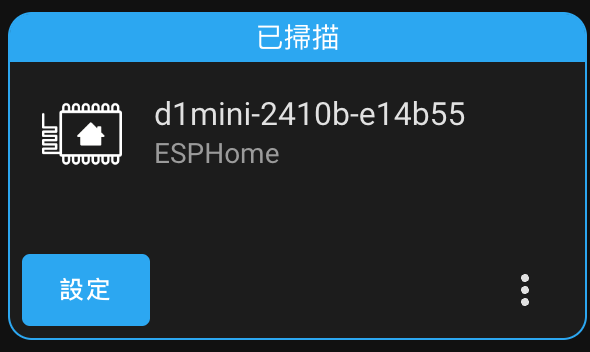
直接設定加入HA
以上為D1 Mini + 2410B 燒錄分享
很多人可能是第一次接觸esphome所以說的有點囉唆 請見諒
補充資料:
- 如果secrets 沒有設定正確導致D1 Mini沒有連上家中wifi
打開手機或者平板的wifi連接設定
wifi:
ssid: !secret wifi_ssid
password: !secret wifi_password
# Enable fallback hotspot (captive portal) in case wifi connection fails
ap:
# ssid: ${name}
password: "87654321"
依照這邊 ssid 定義的名稱去尋找 如果照我的yaml沒有做修改
會出現d1mini-2410b-xxxxxx的ssid出現(xxxxxx為設備的wifi mac位址)
密碼為87654321
連接後會跳轉到wifi連接頁面 選擇你家的wifi輸入密碼後儲存即可
如果沒有跳轉打開瀏覽器輸入 http://192.168.4.1 即可到wifi連接頁面
- 關於更新及OTA的部分 如果yaml照我提供的範例沒有做任何修正
請依照以下步驟去更新
到esphome頁面選擇install

選擇Manual download
選擇Modern format
下載更新用的bin檔案
下載完後登入要更新的D1 Mini
IP可以到裝置資訊那邊查詢
登入後在下方的OTA Update選擇剛剛下載的bin檔
按下更新等待更新完畢即可完成更新







